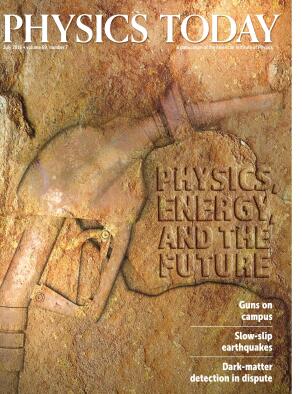Soft surfaces lift hard objects
DOI: 10.1063/PT.3.3224
Two decades ago theorists began to investigate how objects move through viscous fluids when pulled close to a soft, springy surface. They predicted that objects would experience a counterintuitive lift force, even at low speeds. One of those theorists, L. Mahadevan of Harvard University, recently joined Baudouin Saintyves, Theo Jules, and Thomas Salez in devising and running an experiment to test that and other predictions. Depicted here, their setup consists of a glass tank filled with silicone oil. Inside the tank is the test surface: an inclined pane of glass coated with a layer of soft polymer that is embedded with fluorescent particles. When the test object, an aluminum cylinder, rolls or slides down the layer, the combination of a sheet of laser light and a video camera monitors the cylinder’s motion and the layer’s response. As the cylinder moves, it’s expected to push down on the soft layer in front of it and pull back on the layer behind it. The resulting asymmetric pressure distribution should exert a net upward force on the cylinder. The asymmetric deformation was indeed observed, as was the emergence of a low-friction, self-sustained motion of the object at constant speed, consistent with predictions. Mahadevan and his colleagues intend to apply their newfound understanding to cartilaginous joints, the flow of soft particles, and other soft-matter settings. (B. Saintyves et al., Proc. Natl. Acad. Sci. USA 113, 5847, 2016, doi:10.1073/pnas.1525462113





